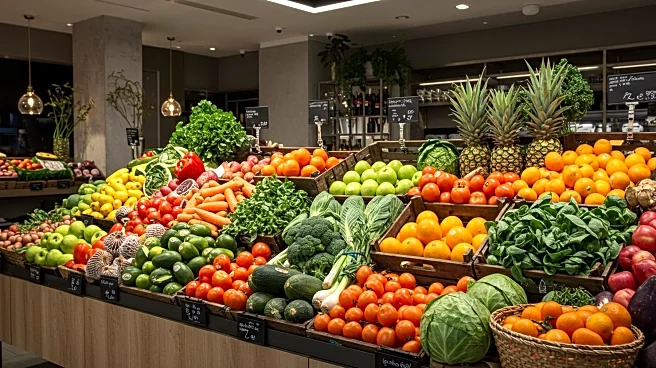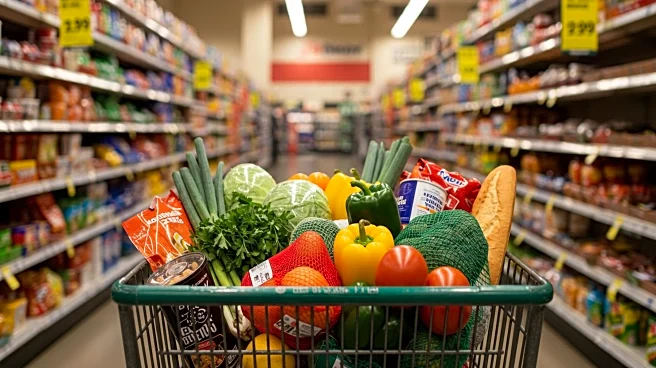What is the story about?
What's Happening?
President Trump's tariffs, effective since August 1, are set to increase the cost of various grocery items in the United States. The tariffs include significant levies on imports from Brazil, India, Mexico, China, and the European Union. Experts predict that these tariffs will lead to a noticeable rise in grocery bills, with an estimated additional cost of $40 per week for American households. Products such as coffee, cheese, chocolate, fruits, vegetables, olive oil, matcha, spices, and wine are expected to see price hikes as suppliers pass on the increased costs to consumers.
Why It's Important?
The implementation of these tariffs has broad implications for U.S. consumers and the food industry. As prices rise, households may face financial strain, particularly those with tight budgets. The tariffs could also impact the competitiveness of imported goods, potentially leading to shifts in consumer preferences towards domestic products. Additionally, the food industry may experience disruptions in supply chains and increased operational costs, affecting profitability and market dynamics.
What's Next?
In the coming months, consumers are likely to see the full impact of the tariffs on their grocery bills. Businesses may need to adjust their strategies to mitigate the effects of rising costs, possibly by sourcing more domestic products or altering pricing structures. The government may face pressure from industry groups and consumers to reconsider or modify the tariffs to alleviate economic burdens.
Beyond the Headlines
The tariffs raise ethical and economic questions about trade policies and their impact on global relations. As the U.S. imposes higher tariffs, affected countries may retaliate, leading to potential trade conflicts. This situation underscores the complexity of balancing domestic economic interests with international trade partnerships and the need for strategic diplomacy.
AI Generated Content
Do you find this article useful?













